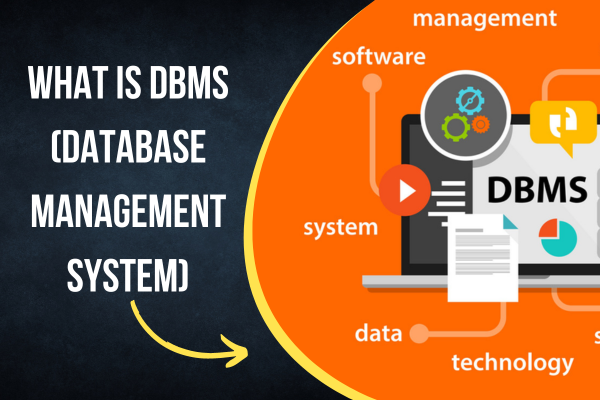As more and more businesses rely on technology to store and manage data, the need for effective database management systems (DBMS) has become increasingly important. In this article, we will explore what a database management system is, why it is important, and the benefits it can provide to businesses.
A database management system is a software program that allows businesses to organize, store, and manage large amounts of data. These systems provide a way to manage the data in a secure and efficient manner, while also ensuring that the data is easily accessible to authorized users.
There are many types of database management systems available, including relational, object-oriented, and NoSQL. Each type of DBMS has its own unique features and advantages, and the choice of which one to use will depend on the specific needs of the business.
One of the key benefits of using a DBMS is the ability to ensure data integrity. A DBMS will typically include mechanisms for controlling access to the data, ensuring that only authorized users can view or modify it. This helps to prevent unauthorized access, and can help to prevent data corruption or loss.
Another benefit of a DBMS is the ability to improve data quality. By providing a central location for data storage and management, a DBMS can help to ensure that data is consistent, accurate, and up-to-date. This can help to improve the quality of business decisions, as well as the efficiency of business operations.
DBMSs can also help to improve data security. By providing mechanisms for controlling access to the data, a DBMS can help to prevent data breaches and other security threats. This is particularly important for businesses that handle sensitive data, such as financial or medical records.
In addition to these benefits, a DBMS can also help to improve the scalability and performance of a business’s data management system. By providing a way to store and manage large amounts of data, a DBMS can help to ensure that the system can handle increased data volumes without becoming slow or unstable.
Types of DBMS
There are several types of DBMS available, each with its own unique features and advantages. The main types of DBMS include:
- Relational DBMS (RDBMS): This type of DBMS is based on the relational model of data, which organizes data into tables with rows and columns. The tables are connected through common fields, known as keys. RDBMSs are the most widely used type of DBMS and include popular systems like MySQL, Oracle, and Microsoft SQL Server.
- Object-Oriented DBMS (OODBMS): This type of DBMS stores data as objects, which can be accessed and manipulated through object-oriented programming languages like Java or C++. OODBMSs are useful for storing complex data structures and relationships, such as those found in object-oriented applications.
- NoSQL DBMS: NoSQL DBMSs are designed to handle large volumes of unstructured or semi-structured data, such as social media data, sensor data, or machine logs. Unlike RDBMSs, which use a rigid schema to define the structure of data, NoSQL DBMSs use a flexible schema that can adapt to changing data requirements. Popular NoSQL DBMSs include MongoDB, Cassandra, and Couchbase.
- In-memory DBMS: This type of DBMS stores data in memory rather than on disk, which allows for much faster data access and processing. In-memory DBMSs are useful for applications that require real-time data processing, such as high-frequency trading or real-time analytics.
- Columnar DBMS: This type of DBMS stores data in columns rather than rows, which can improve query performance for applications that require complex analytical queries. Columnar DBMSs are used in data warehousing and business intelligence applications.
- Graph DBMS: This type of DBMS is designed to store and manage complex graph structures, such as social networks, supply chain networks, or biological networks. Graph DBMSs are useful for applications that require complex relationship management and analysis.
Components of DBMS
A DBMS consists of several components that work together to manage the data stored in the database. The main components of a DBMS include:
- Data Definition Language (DDL): The DDL is used to define the structure of the database, including the data types, relationships between tables, and constraints on the data. This includes creating tables, specifying primary and foreign keys, and defining data integrity rules.
- Data Manipulation Language (DML): The DML is used to manipulate the data in the database. This includes inserting, updating, and deleting records, as well as querying the database to retrieve specific data.
- Query Optimization: Query optimization is the process of optimizing the performance of queries by selecting the most efficient query execution plan. This involves analyzing the structure of the query and the data in the database to determine the most efficient way to retrieve the data.
- Transaction Management: Transactions are a group of operations that are performed as a single unit of work. Transaction management ensures that transactions are completed successfully, or rolled back if an error occurs, to maintain the integrity of the database.
- Concurrency Control: Concurrency control is the process of managing access to the database by multiple users or applications at the same time. This ensures that data is not corrupted or lost due to simultaneous access by multiple users.
- Database Security: Database security includes mechanisms for controlling access to the data in the database, protecting against unauthorized access or modifications, and ensuring the confidentiality, integrity, and availability of the data.
- Backup and Recovery: Backup and recovery mechanisms are used to protect against data loss due to system failures or disasters. This includes regular backups of the database, as well as mechanisms for restoring the database to a previous state in the event of a failure.
Characteristics of DBMS
A DBMS (database management system) is a software system designed to manage large volumes of data efficiently and effectively. The following are the key characteristics of a DBMS:
- Data Independence: A DBMS provides data independence, which means that the data can be accessed and used without knowledge of the underlying physical storage structure. This allows for greater flexibility in data management and allows for changes to the data structure without affecting the applications that use the data.
- Data Integrity: A DBMS ensures data integrity by enforcing data constraints and relationships between tables. This ensures that the data is accurate, consistent, and reliable.
- Concurrent Access: A DBMS allows for concurrent access to the data by multiple users or applications, while maintaining data consistency and integrity.
- Security: A DBMS provides mechanisms for controlling access to the data, protecting against unauthorized access or modifications, and ensuring the confidentiality, integrity, and availability of the data.
- Scalability: A DBMS is designed to handle large volumes of data and can scale to accommodate increasing amounts of data without sacrificing performance or data integrity.
- Backup and Recovery: A DBMS provides mechanisms for backing up the data and recovering from system failures or disasters.
- Query Optimization: A DBMS optimizes query performance by selecting the most efficient query execution plan.
- Data Consistency: A DBMS ensures data consistency by enforcing data constraints and relationships between tables. This ensures that the data is accurate, consistent, and reliable.
Advantage of DBMS
A DBMS (Database Management System) provides several advantages over traditional file-based systems. The following are the main advantages of a DBMS:
- Data Integrity: A DBMS enforces data integrity by ensuring that data is accurate, consistent, and reliable. This is achieved through the use of data constraints, relationships between tables, and other mechanisms that ensure data consistency.
- Concurrent Access: A DBMS allows multiple users or applications to access the data simultaneously, while maintaining data consistency and integrity.
- Data Security: A DBMS provides mechanisms for controlling access to the data, protecting against unauthorized access or modifications, and ensuring the confidentiality, integrity, and availability of the data.
- Reduced Data Redundancy: A DBMS reduces data redundancy by storing data in a centralized location, rather than in multiple files or applications. This reduces the risk of data inconsistencies and errors.
- Improved Data Accessibility: A DBMS provides a centralized location for data storage, making it easier to access and manage data. This improves data accessibility and makes it easier to retrieve and analyze data.
- Improved Data Consistency: A DBMS ensures data consistency by enforcing data constraints and relationships between tables. This ensures that the data is accurate, consistent, and reliable.
- Scalability: A DBMS is designed to handle large volumes of data and can scale to accommodate increasing amounts of data without sacrificing performance or data integrity.
DisAdvantage of DBMS
While a DBMS (Database Management System) provides many advantages over traditional file-based systems, there are also some disadvantages to using a DBMS. The following are the main disadvantages of a DBMS:
- Complexity: A DBMS is a complex system that requires specialized knowledge and skills to set up, manage, and maintain. This can be a disadvantage for smaller businesses with limited resources.
- Cost: A DBMS can be expensive to purchase and maintain, particularly for larger businesses that require high-performance systems or specialized features.
- Overhead: A DBMS introduces overhead in terms of processing power, memory, and disk space, which can impact system performance.
- Dependency: A DBMS can create a dependency on the software vendor, which can limit flexibility and control over the system.
- Single Point of Failure: A DBMS can be a single point of failure, meaning that if the system fails, all data stored in the system may be lost.
- Compatibility Issues: A DBMS may not be compatible with all applications or platforms, which can limit the flexibility of the system.
- Security Vulnerabilities: A DBMS can be vulnerable to security threats, such as hacking or malware attacks, which can compromise the confidentiality, integrity, and availability of the data.
Application of DBMS
A DBMS (Database Management System) has many applications across various industries and business functions. The following are some of the most common applications of a DBMS:
- Enterprise Resource Planning (ERP): An ERP system is a comprehensive business management software that integrates various business functions, including accounting, human resources, supply chain management, and inventory management. A DBMS is used to store and manage the data required for these functions, providing a centralized location for data storage and management.
- Customer Relationship Management (CRM): A CRM system is a software that helps businesses manage their interactions with customers, including sales, marketing, and customer support. A DBMS is used to store customer data and manage the relationships between customers and the business.
- Healthcare Management: A DBMS is used in healthcare to store and manage patient data, including medical records, lab results, and diagnostic imaging. This allows healthcare providers to access patient data quickly and efficiently, improving patient care and treatment outcomes.
- Banking and Finance: A DBMS is used in banking and finance to manage financial data, including customer account information, transactions, and loan data. A DBMS is also used to manage risk and compliance data, ensuring that financial institutions comply with regulatory requirements.
- E-commerce: A DBMS is used in e-commerce to manage product data, customer data, and transaction data. This allows businesses to track customer purchases, manage inventory, and process orders efficiently.
- Logistics and Supply Chain Management: A DBMS is used in logistics and supply chain management to manage data related to inventory levels, shipping schedules, and supplier information. This allows businesses to optimize their supply chain and improve efficiency.
Conclusion DBMS
In conclusion, a database management system is an essential tool for businesses that rely on technology to manage and store large amounts of data. By providing a secure, efficient, and scalable way to manage data, a DBMS can help to improve data quality, security, and accessibility, while also reducing the risk of data loss or corruption. Businesses that invest in a quality DBMS can reap significant benefits, including improved decision-making, operational efficiency, and competitiveness in the marketplace.





Leave a Reply